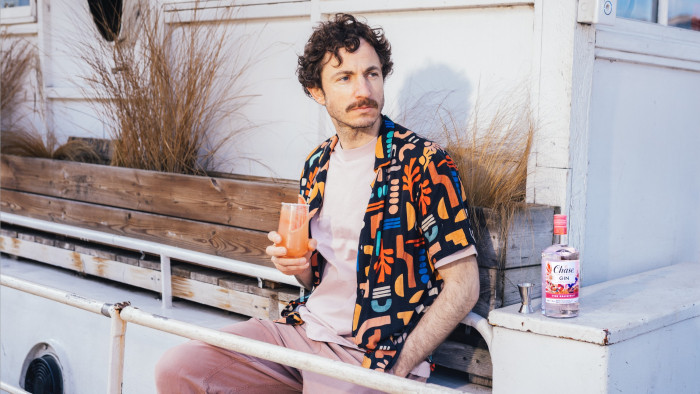Tom Wheatley of Team ShortList learns why it's called endurance running
Six months ago I signed myself and four friends up to take part in the Thunder Run. I'd heard about the race from a few people in the local running club who claimed it was “great fun” and “a brilliant weekend away”. Somehow these statements lodged themselves in my mind to the extent I actually started imagining the weekend would be a bit like Center Parcs. I'd turn up with my team, we'd set up our camp, fire up the BBQ and cheer as we each happily jogged around the countryside; each of us excitedly waiting for it to be our turn to run.
By 3am on Sunday morning, as I grunted and cursed my way through the pitch black woodlands; the rain beating against my sweat-strewn face, I realised I was wrong.
The concept of the Thunder Run is fairly simple. You have 24 hours to run around a 10km course as many times as you can. Most people run it as a team of 5 or 8 people, swapping a baton over to the next team-mate when he or she finishes a lap. Others run it as either a pair or on their own, neither of which I can even begin to imagine based on my own struggles.
There's something about the premise of the race that makes it sound easier than it actually is. I've run a few marathons and I often run a 12k route home, so looking at a 10km course didn't particularly scare me. Although you have to run it multiple times, the fact that you get a nice two-hour break in-between made it sound pretty manageable. It's just like doing a marathon with lots of long rest stops I kept telling myself.
It really isn't.
We turned up at about 10am on the Saturday morning and set up our tents before wandering around what appeared to be an enormous music festival – one where you replace the dancing with stretching and the cups of Somerset cider with bottles of energy drink.

Unfortunately our fastest team member had to pull out on the day due to illness, which meant our pipe dreams of winning were considerably lessened. Taking a team of five down to four doesn’t sound like a lot on paper, but in a 24hr race that effectively means each remaining member has to run at least 10km more and took our rest time down from three hours to two.

Will, our first runner, an ultra-marathoner and our greatest hope for success, set off at 12pm in 28 degrees heat whilst the rest of us sought some shade as we endlessly filled up our water bottles. We watched the first wave runners make their way around the course as it wound its way through the campsite and out into the surrounding woodland. Then one by one we took our turn to wait at the start line and pick up the baton for our turn to run.

I was third in the running order. As I grabbed the baton from my fatigued team-mate he wiped the sweat from his brow and uttered “It’s hard” before disappearing into the crowd. I set off on my first lap. I’d wrongly assumed that the course would be fairly flat so I set off too quickly. Not 1km in I hit the first hill and realised that this really was a trail run. I struggled my way up a few hundred metres of single track incline before levelling out again into the midday heat. By 3km it felt like I’d ran a lot more and my t-shirt was already drenched in sweat. Suddenly 21 hours seemed like a very long way away.
The course weaved its way through trees and across undulating hillsides, occasionally dipping back through the campsite where the cheering crowds offered an occasional push of motivation. After 48 minutes I saw the finish line in sight and heaved a sigh of relief before passing the baton on to our fourth member.

Unlike a normal race however there was no sense of relaxation after crossing the finish line. With the knowledge that in around two hours I’d have to do the whole lap again I knew I couldn’t really relax. I wandered back to my tent and ate a few snacks and a couple of energy gels as we waited for our next turn. Something which seemed to come round all too quickly.

As day turned to night everyone seemed to relax with some final respite from the heat. Running suddenly seemed easier as the evening breeze took hold and the hills became a bit harder to see in the distance. The enjoyment however was short-lived.
After managing about fifteen minutes sleep in a slightly rain soaked £9.99 Argos tent, my alarm went off to mark my third and fourth laps were about to happen in 20 minutes (2am). By this point we’d decided that in order to allow some more time for sleep we were each going to run two laps in a row. At the time is seemed like a logical idea, however I soon realised that any attempt to sleep during the race was almost impossible. As the runners continued through the night so did the cheering crowds.
As I started my night lap I realised that my headlamp was ill-suited as a running aid, offering me little more than a vague idea that there was a surface below my feet. I stumbled around the woods as significantly better prepared runners dashed past me with head torches tantamount to the headlights of a monster truck. By the end of the first 10k lap I’d take 1 hour and 35 minutes to cross the finish line. I threw in the towel and passed on the baton to the next team mate; my desire to run quashed.
An hour later the sun appeared again, and with it a sense of hope and motivation to push through the final six hours. Although we struggled to hit the 55 minute mark for the subsequent laps we managed to push on to 12pm. Finally it was all over, we could go home.

Unlike most of the races I’ve done in the past, finishing the Thunder Run leaves you with a strange feeling. After a marathon you feel elated with an instant sense of achievement; you want to go and celebrate for the rest of the day. After finishing the Thunder Run I simply felt relieved, however with little energy and sleep deprivation I had no desire to go out and celebrate. After returning home and sleeping for fourteen hours the pride eventually kicked in along with the realisation that running 60k in a weekend is pretty impressive. I can’t even imagine how the solo runners felt, presumably after sleeping for three full days.
Whereas most large scale races are a mixture of abilities, the Thunder run is a real runner’s race. Anyone who’s prepared to spend 24 hours camping for the love of running needs to really care about the sport. The campsite was awash with enormous running clubs all camped out in their own areas; giant gazebos laid out next to the course with banners and cheering crowds. As you walk around the event people talk about their times and greet strangers as they spot a T-shirt from a race they’d run as well.
Two days later and the effort all seems worth it. Finishing 31st out of 45 was far from what we’d hoped but with little planning and a man down we were all happy with the result. Next year, no longer the course rookies, we’d be prepared with a plan, and a back-up runner.
The Thunder Run takes place in July. Click here for to find out about previous events and for updates on next year's race.
Latest


Ten things you need to know about Hyrox


Is clubbing actually good for you? We asked an expert


Horticulturist shares tips on how to urban garden
Related Reviews and Shortlists







